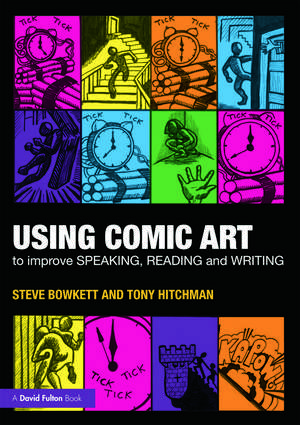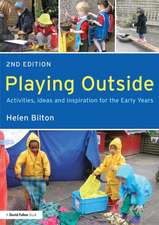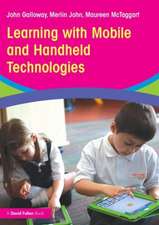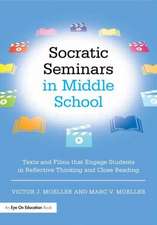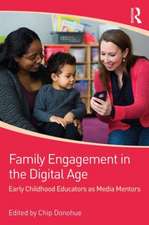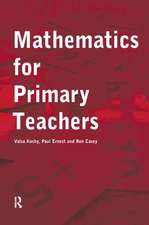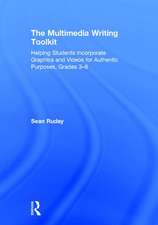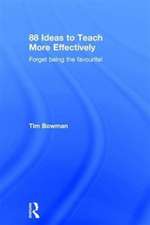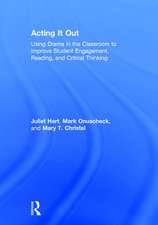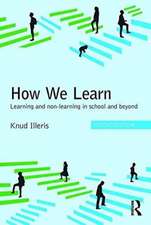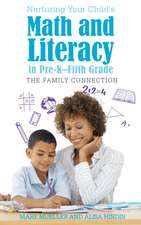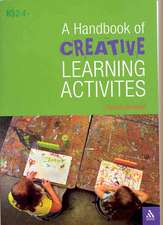Using Comic Art to Improve Speaking, Reading and Writing
Autor Steve Bowkett Ilustrat de Tony Hitchmanen Limba Engleză Paperback – 16 dec 2011
In reading comic books children are engaging with highly complex and structured narrative forms. Whether they realise it or not, their emergent visual literacy promotes thinking skills and develops wider metacognitive abilities. Using Comic Art not only motivates children to read more widely, but also enables them to enjoy a richer imagined world when reading comics, text based stories and their own written work.
The book sets out a range of practical techniques and activities which focus on various aspects of narrative, including:
- using comic art as a visual organiser for planning writing
- openings and endings
- identifying with the reader, using different genres and developing characters
- creating pace, drama, tension and anticipation
- includes ‘Kapow!’ techniques to kick start lessons
- an afterword on the learning value of comics.
A creative and essential resource for every primary classroom, Using Comic Art is ideal for primary and secondary school teachers and TAs, as well as primary PGCE students and BEd, BA Primary Undergraduates.
| Toate formatele și edițiile | Preț | Express |
|---|---|---|
| Paperback (1) | 371.31 lei 6-8 săpt. | |
| Taylor & Francis – 16 dec 2011 | 371.31 lei 6-8 săpt. | |
| Hardback (1) | 893.27 lei 6-8 săpt. | |
| Taylor & Francis – 16 dec 2011 | 893.27 lei 6-8 săpt. |
Preț: 371.31 lei
Nou
Puncte Express: 557
Preț estimativ în valută:
71.05€ • 74.19$ • 58.67£
71.05€ • 74.19$ • 58.67£
Carte tipărită la comandă
Livrare economică 15-29 aprilie
Preluare comenzi: 021 569.72.76
Specificații
ISBN-13: 9780415675512
ISBN-10: 0415675510
Pagini: 192
Ilustrații: 97 b/w images
Dimensiuni: 174 x 246 x 13 mm
Greutate: 0.34 kg
Ediția:New.
Editura: Taylor & Francis
Colecția Routledge
Locul publicării:Oxford, United Kingdom
ISBN-10: 0415675510
Pagini: 192
Ilustrații: 97 b/w images
Dimensiuni: 174 x 246 x 13 mm
Greutate: 0.34 kg
Ediția:New.
Editura: Taylor & Francis
Colecția Routledge
Locul publicării:Oxford, United Kingdom
Public țintă
Professional and Professional Practice & DevelopmentCuprins
Introduction – comic art as a visual organiser for planning writing
Chapter 1: Strong Openings.
Chapter 2: Opening lines.
Chapter 3: What do you want the reader to see?
Chapter 4: Details add to the tension.
Chapter 5: Jump into the action.
Chapter 6: Small Important Details.
Chapter 7: Drawing as visual shorthand.
Chapter 8: Scripting.
Chapter 9 Strong Endings.
Chapter 10: Creating Quick Characters.
Chapter 11: Don’t take that tone with me.
Chapter 12: Heroes and Villains.
Chapter 13: Controlling Pace.
Chapter 14: Build up the drama.
Chapter 15: Anticipation.
Chapter 16: Genre.
Chapter 17: Using Kapow Techniques for Art Appreciation.
Chapter 18: Kapow techniques and non-fiction writing.
Chapter 19: A note on rough layouts.
Chapter 20: Afterword – the learning value of comics.
Bibliography
Index.
Chapter 1: Strong Openings.
Chapter 2: Opening lines.
Chapter 3: What do you want the reader to see?
Chapter 4: Details add to the tension.
Chapter 5: Jump into the action.
Chapter 6: Small Important Details.
Chapter 7: Drawing as visual shorthand.
Chapter 8: Scripting.
Chapter 9 Strong Endings.
Chapter 10: Creating Quick Characters.
Chapter 11: Don’t take that tone with me.
Chapter 12: Heroes and Villains.
Chapter 13: Controlling Pace.
Chapter 14: Build up the drama.
Chapter 15: Anticipation.
Chapter 16: Genre.
Chapter 17: Using Kapow Techniques for Art Appreciation.
Chapter 18: Kapow techniques and non-fiction writing.
Chapter 19: A note on rough layouts.
Chapter 20: Afterword – the learning value of comics.
Bibliography
Index.
Descriere
In reading comic books children are engaging with highly complex and structured narrative forms. Whether they realise it or not, their emergent visual literacy promotes thinking skills and develops wider metacognitive abilities. Using Comic Art not only motivates children to read more widely, but also enables them to enjoy a richer imagined world when reading comics, text based stories and their own written work.
The book sets out a range of practical techniques and activities which focus on various aspects of narrative, including:
The book sets out a range of practical techniques and activities which focus on various aspects of narrative, including:
- using comic art as a visual organiser for planning writing
- openings and endings
- identifying with the reader, using different genres and developing characters
- creating pace, drama, tension and anticipation
- includes ‘Kapow!’ techniques to kick start lessons
- an afterword on the learning value of comics.
